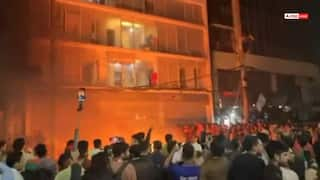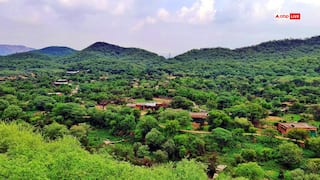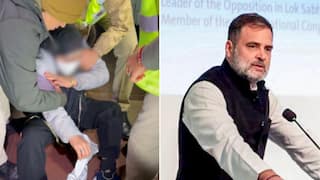Regulating Converged Digital Technologies And Services: Classic Case Of Mixing Apples With Oranges

Some of the recent regulatory trends have been inexplicably startling. TRAI’s recent consultation on regulating “Converged Digital Technologies and Services”, which essentially proposes to have some form of "same service same rule” is one such instance. To put in simple words, one of the aspects can be explained to say WhatsApp or Facetime or the OTT platforms like Netflix and Amazon, which provide services outside the licensing framework of telecommunication licensing or broadcast permissions, must be subject to similar rules/terms/regulations by assuming them to be aspects of convergence. TRAI, through the consultation, also intends to explore the convergence of the Department of Telecommunications, the Ministry of Information and Broadcasting and the Ministry of Electronics and Information Technology (MeitY).
While there had been a reference from the DoT on the above subject way back in October 2021, and later on August 12, 2022 (with some additional questions on broadcast / telecom spectrum management, and it is a mystery as to what triggered that), it was around that time only that the telecom minister clarified during discussions on the Telecommunication Bill that apps that provide communication services are only intended to be brought within the scope of telecommunication law and not the ones offering broadcasting services. The last event seems to have missed the attention while the consultation on the subject of “convergence” was floated. While at the stage of the Telecommunication Bill, there had been some assurances from the minister of not bringing “broadcasting” within the ambit of definition of “telecommunication”. The doomsday comet, however, seems to have made a visible comeback through this consultation process of “Convergence”, threatening to consult a possible strike on the broadcast planet consisting of broadcasters, MSOs, cable operators, DTH operators etc.
Progressing on this line could have a black hole effect and any attempt to bring these stakeholders of media and entertainment industry under the telecom licensing regime or make them pay license fee on AGR basis like the telecom business does or to make them bid for the spectrum, which is currently being administratively allocated, or to subject them to comply with any other similar licensing obligations by treating them like telecom operators in the guise of convergence could cause a catastrophic impact. It would result in effectuating and administering regulatory euthanasia to the broadcast and cable sector, making it an unaffordable business to continue for most.
ALSO READ | Digital India Act: A Black and White Journey Begins
Apples And Oranges
What has been a matter of more concern is the firm belief of the government that price needs to be discovered by market forces and that can only happen by auction. The TRAI wing dealing with satcom spectrum also seems to be not aligned with the one dealing with convergence on the subject, which is why probably there is likelihood of independent consultation on the same. TRAI must ideally return such proposals explaining the reasons on why it is not possible to auction satcom spectrum. It may consider launching a formal pre-consultation, inviting questions aimed at whether anything would survive in broadcast and cable /DTH if satcom spectrum gets auctioned. This can also arm its decision with sufficient reasons whenever it sends back its proposals. It is also understood to be felt that the government may go back to seek clarifications from the Supreme Court on whether the satellite spectrum can be auctioned administratively. Doesn’t it realise that these are policy decisions and that can be taken independently by them and on which the Supreme Court may not have any expertise or say?
The popularly called “license cancellation decisions”, which brought an end to several telecom players and the subsequent Constitutional Reference were contextual and may not necessarily hold good at all points of time and for all situations. It can’t be a convenience methodology that when one doesn’t get a favourable answer the way one desired, you go back to the apex court to seek ratification and when one has to decide anything to the contrary, you come up with a law that overturns a Supreme Court ruling (like it happened in the Vodafone tax case and several such line of cases when the basic structure doctrine was being dealt). In any event, currently TRAI is also understood to be struggling on the unit of spectrum with no clear and categorical answers so far. And that is clearly because the authorities are trying to compare apples with oranges.
In this regard, the IB ministry observations dated October 4, 2022 (which also find mention in the TRAI Consultation) would become extremely relevant and pertinent wherein it has categorically stated that both carriage policy and regulation for broadcasting should continue with the IB ministry, including the spectrum allocation (which would also be in line with ITU standardisation of various spectrum bands). There is no doubt that the IB ministry has been effectively coordinating with multiple levels of agencies like the Ministry of Home Affairs, DoT, Department of Space, Ministry of External Affairs, Department for Promotion of Industry and Internal Trade, MEITY, Ministry of Corporate Affairs etc while granting clearances and permissions to broadcasters, and has already gone a long way by establishing the integrated Broadcast Seva Portal. These facts themselves were sufficient for TRAI to have returned the reference from DoT advising them to first resolve the internal turf wars, deadlock and differences with the IB ministry.
ALSO READ | Why Broadcast Industry Needs Robust Statutory Framework Rather Than 'Guidelines'
Everything Digital Does Not Mean Their Functions Can Be Merged
What was equally important for this consultation was to await the outcome of three major legislations namely the Telecommunication Bill, the Digital Personal Data Protection Bill and recently announced Digital India Act (DIA). Also, is there any “problem statement”, which is intended to be addressed by carrying out this consultation? Isn't the need of the hour not the convergence of ministries and law but a harmonisation of the law? A question also arises if it has even been examined that this could lead to facilitating favourable business atmosphere only for a select few and that too at the cost of causing regulatory death / elimination of several others.
The “convergence” is a technological construct and merely because everything becomes digital does not in any manner convey that the underlying functions have also got merged. There is a dramatic difference in the types of services offered and that does not call for any form of convergence of laws, regulations and so on. The e-commerce, e-finance or e-health has got nothing to do with telecommunications, and it does not mean convergence of health and finance into telecom. Similarly, broadcast is communication to public and the world at large whereas telecommunication is communication between two or more individuals. The mere possibility of offering the telecommunications using a broadcast infrastructure or vice versa cannot be the cause and reason to converge the ministries and laws. What can clearly be stated or what needs to be clearly answered before making any progress on the issue is also as to whether there is any tearing rush to deal with this consultation on convergence especially when the Telecom Bill is likely to be debated in the monsoon session and similarly the Digital Data Protection Act is also now in the course of discussions by MeitY, which recently gave the entire construct and proposed framework of the proposed Digital India Act 2023. Here, it is also important to know how the draft telecom bill looks like or what is going to be placed in Parliament in the winter session to avoid any fait accompli allegations later on. What further needs to be answered is the exact need to have “Converged Regulator” or “Converged Ministry” or “Converged Laws/Regulations” and what objectives would be achieved as a consequence? Further, was there any “market failure” or any other vital concern and what happens to the progress made by the IB ministry towards achieving ease of doing business through its various initiatives.
The consultation at several places highlights the concern of working in silos and the question that arises is whether the consultation itself is a step taken in silos without first addressing and bringing a quietus to the conflict between the DoT and the IB ministry or by ignoring the exact scope of the Telecommunication Bill, or for that matter the recent Digital India Act 2023. Interestingly, some of the ‘Open Internet’ principles as proposed to be enshrined in the Digital India Act may also be contrary to the ideas of convergence. The convergence may result in creation/concentration of market power by wiping off most of the competing smaller broadcasters or distribution platforms and may facilitate and promote gatekeeping practices whereas the ‘Open Internet ideas’ attempts to prevent them. If convergence of “telecommunication” and “broadcasting” is to take place in one, with a mandate that broadcasters need telecom licence to operate or need to pay for the spectrum or buy it in auction directly or indirectly, it would mean most of the broadcasters out of around 900 players would not be in a position to either buy spectrum in auction or even afford to make licence fee / spectrum charges payments, and that would mean broadcasting would become an exclusive privilege in the hands of a chosen few rich who have deep pockets to afford provision of broadcast services (now proposed to be converged under telecommunication services). This would be promoting concentration of market power in the name of convergence and eliminating other forms of distribution and technologies to fight their battle in non level playing field condition and compete in the market and may be promoting only a few modes of distribution. Even assuming the same is to facilitate broadband through satellite then whether the same is getting done at the cost of displacing broadcasting services or whether it would be permitted through non satellite means?
Further, it may also lead to a situation that any communication or content OTT platforms can thrive and survive on the internet only if they are able to fulfill the demands of the Internet Service Providers (ISP) who would act as gatekeepers and prevent any innovation or technological advancement which can be a potential threat of becoming substitutable to the services which they offer or are permitted to offer by availing telecommunication licences. The same could even have drastic market consequences and may make the communication & content services unaffordable to the consumers and thus may not be in the interest of consumers and may result in most of M&E stakeholders exiting the market.
During the discussions on the Telecommunication Bill, the broadcasters have strongly advocated to avoid “one size fits all” approach policy while dealing with broadcast spectrum. Even in the past, while the 5G auction discussions and consultation were going on, the broadcasters had raised the concern of interference. The way, however, certain consultations have now come up gives an impression of what started in the form of a small trespass, is now heading towards a full-fledged takeover, which can have extreme unimaginable consequences to the broadcast industry.
It would also be interesting to note the way the industry has started shaping up and the way business models have started changing. With the advent of technology, the substitutability of certain services that of licensed services was an inevitable consequence. However, the question to be answered is whether the mere fact of substitutability should be a cause to bring them within Telegraph Act licensing framework, which is actually a licence to establish, operate and maintain telecommunications. The Net Neutrality principles have enabled the technologies to flourish and evolve and whereby the Internet Service Providers (ISP) are bound to facilitate access and all contents and application in a non-discriminatory manner, which is regardless of the source and without favoring/block/selective blocking any particular products/websites. The proposal to bring everything under one head of telecommunications merely because these OTT services / broadcasting services have committed the sin or have dared of becoming substitutable or for that matter are using administratively allocated spectrum could be a perfect recipe for disaster.
There should not be now any self-triggered regulatory changes which acts as a catalyst in wiping off of certain products and services as currently being offered by Traditional TV Broadcasters (who already have suffered heavily on account of side effects of drastic regulatory changes). It is a wait and watch situation and a time to permit these products and services to fight their own last battle of finding a space for themselves to compete with the evolving technologies and content distribution.
These are interesting times and a wait and watch situation even when we observe some recent innovative/evolving business models. The battle in the market is no longer confined to a Digital vs Traditional Linear mode of watching content but the digital modes which require a telecom infrastructure to ride, has used content monetisation methods through data consumption route as against engaging in the battle of content pricing. The linear broadcasters in response who don’t have the benefit of “monetizing through data consumption” are fighting their own battle by making it free on some FTA channels and also advocating and marketing the awareness campaign with the end consumer that if you avoid paying for content, one ends up paying for data.
Further, in a recent report it was highlighted that advertisement deals for IPL are also taking a lot longer to close wherein again there has been an intense battle going on. The economics may differ and models are also in the course of evolving and being tested in the market and there can be arguments both for and against. One of them could be that content and carriage are two independent aspects and it cannot be permitted to be offered as a bundled pack of services as it may discourage the creative industry since the ultimate measure in such case would become the carriage cost which remains uniform and the content value gets perished / nonexistent or subsumed into the carriage cost. One as a creator of content would have no motivation left to bring novelty since at the end of the day the price would remain the same i.e. the carriage cost. As of now it would be best to leave the things the way they are and only to address and keep a check on any anticompetitive or abuse of dominance practices and not to bring any change or proposal which can let the control go to any one or few hands or which could create regulatory roadblocks or disallow any stakeholder to freely compete. This should therefore probably be left for market discovery on who prevails without any regulatory interference at this stage.
Another aspect to be appreciated is the very fundamental premise or the basic principles of licensing Telecommunication rights. The Sec 4 Telegraph Act license has always been the licensing of an exclusive privilege enjoyed by the Govt. and which is parted off for a “quid pro quo” of consideration in favor of private players. The broadcast on the other hand can be equated to be the exercise of freedom of speech & expression and thus is it a very important question to be examined on whether bringing “broadcast” in the ambit of “telecommunications” would result in Govt. control and influence on media and would result in redefining the very philosophy of “free speech” be subject to licensing terms. Can my broadcast of free speech by any stretch of imagination be construed as an act which requires licensing from government which is in exercise of exclusive sovereign power.
These are therefore times to treaded upon with extreme caution and care and the Consultation should ideally first be brought to examine on whether the level-playing field exists for the M&E sector in the first place and as things stands today like for instance the presence of unregulated Prasar Bharti having unfair benefits of mandatory carriage of channels/ signals on Distribution Platforms vis a vist private broadcasters, mandatory sharing of signals of events of national importance, auction of slots with the newly discovered intent of revenue maximisation (which is outside the scope and ambit of the objectives of Prasar Bharti Act), DD Free dish competing with pay distribution platforms and whether they actually cater the needy alone or can it also be kept as the chosen linear medium option by any and all and eliminating all other forms of TV distribution platforms. There are several other important aspects of consultations which can be taken up before we get into the discussion of Convergence and it should therefor take a backseat at this stage.
The author is an independent counsel and columnist.
[Disclaimer: The opinions, beliefs, and views expressed by the various authors and forum participants on this website are personal and do not reflect the opinions, beliefs, and views of ABP News Network Pvt Ltd.]


























